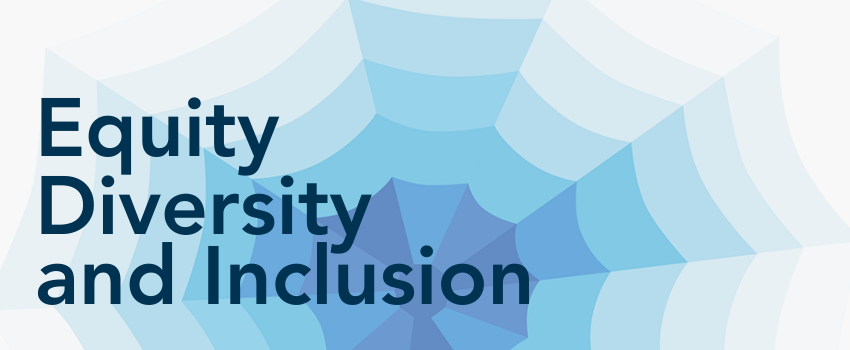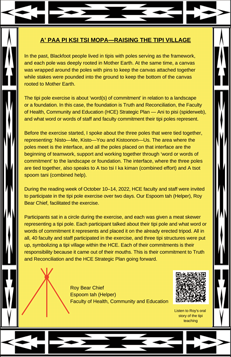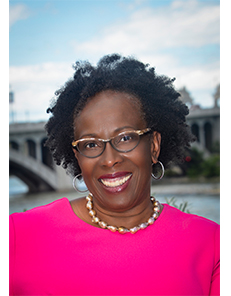
Our commitment to EDI
As a Faculty whose work is deeply rooted in making connections across all sectors and populations, we inspire students to seek the truth and honour the TRC’s calls to action. Now, we include the Scarborough Charter to guide us on anti-Black racism and Black inclusion in post-secondary education.
There is much work to be done by our Faculty to disrupt the system. We are having discussions on what this will look like, but when does the action begin?
When we drafted HCE’s strategic plan, we worked closely with Indigenous and racialized employees. Thanks to our Espoom Tah (Blackfoot for helper) Elder Roy Bear Chief, we were gifted the story of ani to pisi, told by Roy’s brother Clement.
Ani to pisi speaks to the spider web and the idea that when there is a vibration in our Faculty, we come together as a community — whether to celebrate, heal or help.
In spring 2020, a vibration was felt. While we continue to address the work of Indigenization and decolonization, the realized the language we used in our strategic plan needed to be more inclusive of anti-racism, specifically, anti-Black racism. We’ve set in motion updating the plan and our strategies to be more inclusive.
As we continue to examine our work and dialogue about equity, diversity and inclusion, we continue to connect to actions that align with our strategic plan.
This is not something we can do in isolation. We recognize the need to engage with students, employees and, most importantly, the community.
We need to listen and better understand what supports are needed for our students to have an equitable learning experience; how do we understand our biases on faculty and staff hiring committees; how can we promote and support research; where can we make spaces for BIPOC voices; and how can we support communities flourishing.

A' PAA Pl KSI TSI MOPA — Raising the tipi village
View the three-tipi poster and HCE's commitment to indigenization and decolonization.
Roy's oral story of the tipi teaching is coming soon.
In the past, Blackfoot people lived in tipis with poles serving as the framework, and each pole was deeply rooted in Mother Earth. At the same time, a canvas was wrapped around the poles with pins to keep the canvas attached together while stakes were pounded into the ground to keep the bottom of the canvas rooted to Mother Earth.
The tipi pole exercise is about 'word(s) of commitment' in relation to a landscape or a foundation. In this case, the foundation is Truth and Reconciliation, the Faculty of Health, Community and Education (HCE) Strategic Plan -Ani to pisi (spiderweb), and what word or words of staff and faculty commitment their tipi poles represent.
Before the exercise started, I spoke about the three poles that were tied together, representing: Nisto-Me, Kisto-You and Kistoonon-Us. The area where the poles meet is the interface, and all the poles placed on that interface are the beginning of teamwork, support and working together through 'word or words of commitment' to the landscape or foundation. The interface, where the three poles are tied together, also speaks to A tso tsi I ka kiman (combined effort) and A tsot spoom tani (combined help).
During the reading week of October 10-14, 2022, HCE faculty and staff were invited to participate in the tipi pole exercise over two days. Our Espoom tah (Helper), Roy Bear Chief, facilitated the exercise.
Participants sat in a circle during the exercise, and each was given a meat skewer representing a tipi pole. Each participant talked about their tipi pole and what word or words of commitment it represents and placed it on the already erected tripod. All in all, 40 faculty and staff participated in the exercise, and three tipi structures were put up, symbolizing a tipi village within the HCE. Each of their commitments is their responsibility because it came out of their mouths. This is their commitment to Truth and Reconciliation and the HCE Strategic Plan going forward.
—Roy Bear Chief, Espoom tah
Standing on the Shoulders of Greatness:
Honouring Generations who Came Before

Episode 1: Black History in Canada
Resources
- Dr. Afua Cooper, Professor, Faculty of Arts and Social Sciences, Dalhousie University; Killam Research Chair, and Visiting Scholar at Charles Warren Centre, Harvard University. Learn More.
- We Need to Talk: A forum on systemic racism, Facebook, CBC Edmonton, Sandra Batson and Tanara McLean
- Expelling Racism From The Classroom, Sprawl Calgary, Hadell Abdel-Nabi
How To Talk To Your Kids About Racism, YouTube, Debra Shigley and Jon Kelley

